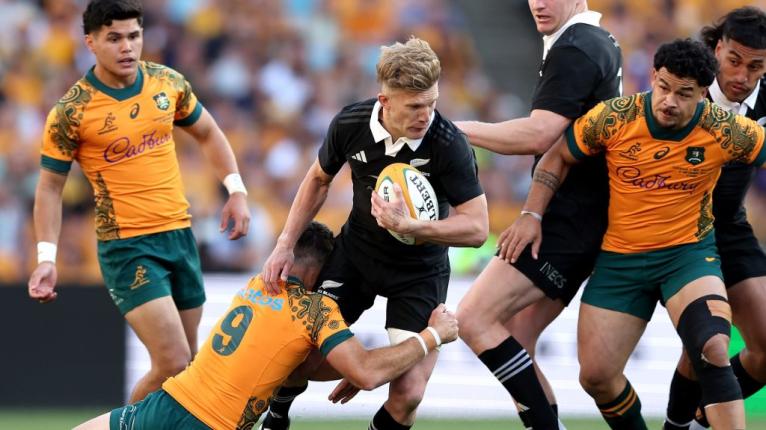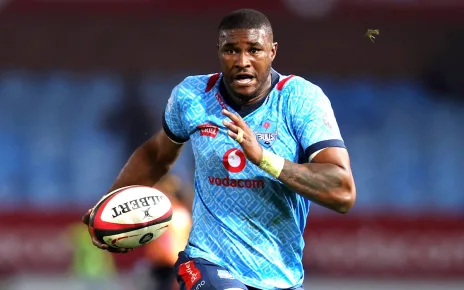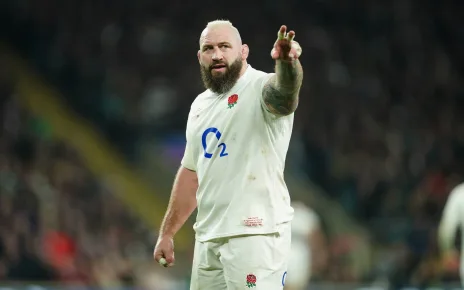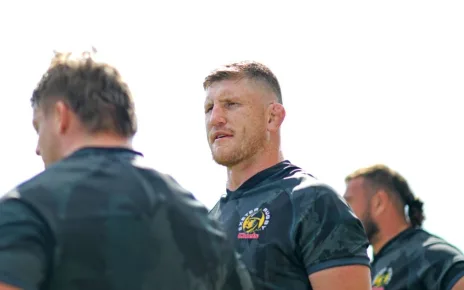UNBELIEVABLE DISCOUNTS AT AMAZON.COM ||
What makes a great 10 in the professional era? Is it instinctive brilliance with the ball in hand, or a more strategic, panoramic view of the field? The player who can pull a rabbit out of the hat and create something from nothing, or the one who can reliably navigate you up and down the field, the steady hand on the rudder?
On the face of it, there is not much difference between New Zealand’s Damian McKenzie and Argentina’s Tomás Albornoz, at least in physical terms: both are slight – 5ft 10ins tall and weighing in at around 80kg. The similarities end there.
McKenzie plays for the illustrious Chiefs, who have won Super Rugby titles on two occasions and finished runners-up on three others. Albornoz plies his trade at Benetton Treviso, and the Italian club has yet to advance beyond a quarter-final of the URC or Pro12/14 in their 15-year history.

Although he is only two years older, McKenzie has far more international experience than his Argentine counterpart. He has racked up 56 caps since 2016, while Albornoz has 16 since 2022. D-Mac has been running on for New Zealand for 10 years now, Albornoz only cut his starting teeth this season.
But if you had to choose between the two in a choice for the most pivotal spot on the field now, the balance might well tip towards the little Puma, and therein lies the dilemma for Scott Robertson and his fellow coaches.
New Zealand has a yearning for instinctive genius at 10 – think Carlos Spencer and Frano Botica and Beauden Barrett – but if World Cups are the litmus test of success, New Zealand thrives more when it has had a firm hand on the tiller.
Grant Fox was at the helm in the first winning World Cup final in 1987, Andrew Mehrtens and Richie Mo’unga ran the cutter in two achingly narrow losses to the Springboks in 1995 and 2023. Dan Carter can best be described as a universal 10, starting his career as ‘the natural’ before blossoming into the best game-manager of them all.
‘Razor’ could scarcely avoid the conundrum when asked to summarize McKenzie’s performance in the Bledisloe Cup win over Australia in Sydney. He even had to resort to the dreaded word ‘mercurial’ – as sure a sign as any in rugby’s secret vocabulary of impending doom for the play-making 10.

“Damian was mercurial. He can play, he can turn it on. We know how gifted an athlete and player he can be. He is getting better at his craft. We have got to finish a couple of opportunities and we are aware of that.
“We have backed him. You have got to do that. You have got to give someone the opportunity and time to hold those reins as long as they possibly can, [but] have someone else who can play there, because it can change quite quickly.”
After McKenzie had blown three scoring opportunities on the final pass, Robertson added there would be no slap on the wrist forthcoming.
“No, no – but you do have a conversation because you want to trust [his] skillset, you want [him] to be instinctive.
“It’s his greatest gift, isn’t it? Find space, glide, but put it on someone’s chest.”
Razor’s comments raise more questions than they answer. McKenzie ‘can turn it on’, but he’s merely ‘getting better at his craft’ at 29 years old – an age when many inside backs are contemplating where best to build up their pensions. The Chief has now had eight consecutive games in the starting saddle in 2024 and he has been trusted, but that trust has yet to be fully repaid by performances out on the field.
As ex-All Blacks scrum-half Justin Marshall explained on The Platform: “The word that came out of [Razor’s] mouth, which was quite an interesting one, was ‘persevere’. Now that means that Scott Robertson has put a stake in the ground with Damian McKenzie, and he’s quite prepared to keep rolling him out there until he can get the best out of him.
“[If] you’ve got a guy that plays straighter… a little bit more confrontational in terms of taking on defenders, he’s not as lateral in attack as Damian McKenzie.
“That means the centres function differently, the outside backs function differently because, when a player who plays much straighter to the line is pulling the trigger, then their running lines change.
“What we’re not prepared to do at this stage is test that and see whether or not other players can actually play better or get into the game better with a different guy pulling the trigger.”
“I am not saying Damian McKenzie is playing crap rugby by any means, and it’s not a criticism of him personally.
“[But] we are struggling against really fast blitz defences, and that’s going to happen in the UK [on the end-of-year tour]. Why are we not prepared to change it up it a little bit?”
Albornoz has only started two games in the current Rugby Championship, but they have reaped a rich harvest of 13 tries, four of which came in last weekend’s match against one of those ‘really fast blitz defences’ weaponised by the world champion Springboks.
The Pumas 10 brought the home side back into the game by playing straighter and attacking the line, according to the Marshall prescription.
At the beginning of the scoring phase, Springbok 10 Handre Pollard is gesturing to the open side and his team-mates are looking to up their line speed and build defensive momentum on that side of the field. Albornoz’s antidote is simple and very, very effective: he weaves back to the short side and runs straight at the man who was pointing elsewhere.
Look at the impact that ‘first move’ has on the running lines thereafter: Jesse Kriel is fixed by an inside pass and cannot slide out, the running lines are directed at the inside shoulder and grant wing Mateo Carreras ample space to finish down the left.
Albornoz pulled off the same trick close to the South African goal line to give the Pumas their fourth try of the half.
Attacking flow looks like it going to the Argentine left after a tapped penalty, and that is where the Bokke look to develop their line speed, but instead the Pumas 10 drifts back to the short side to beat two forwards [number six Marco Van Staden and two Malcolm Marx] on a mismatch.
The ability to run aggressively from first receiver is one aspect of straighter, shorter-passing offence. Playing flatter as the first man with the whole width of the field available, is another.
The Pumas want the Bokke defence up in their faces, in order to make that tip-on pass from Julián Montoya really matter – so it results in a line break, with far less opportunity for the defenders to recover. The 10 needs to stand no more than five metres from the defence when passing the ball to engineer that situation.
Compare the positioning with McKenzie’s in the game at the Accor Stadium.

In the snapshot McKenzie is standing around 10m off the line compared to Albornoz’s five. It makes the second pass easier but it also gives the defence more time to read and react appropriately. Even after a restart turnover on the Kiwi right, there is no hustle to hit the line as hard and quickly as possible on the following play, only a languid pass out to Jordie Barrett with the Australian defence ready in front of him.
When McKenzie did attempt to flatten up the results were not positive.
Where Albornoz receives and distributes the ball within one stride, McKenzie is already running towards his intended target [Tyrel Lomax] when he makes the pass and that brings extra pressure on the big prop and the men outside him.
When Argentina needed depth in their attack to provide width, it was Albornoz who ensured they got it.
Men beginning their runs from a spot directly behind the first back help pull the defence out of shape as the point-of-attack moves wider.

There is little doubt McKenzie is a more complete rugby footballer than Albornoz ever will be. Is he a better 10 for his team? Probably not. Albornoz knows how to play within Felipe Contempomi’s system and knows how to make good decisions which suit the Pumas’ attacking aims. He is also a better open-field kicker than the New Zealand pivot.
The All Blacks are currently averaging a measly two tries per game over four matches against the two versions of the blitz defence Robertson’s charges have faced so far [England and South Africa]. They will get more of the same from England and France, and possibly even from Ireland on the end-of-year tour.
How much longer can Robertson persist with McKenzie? When will he experiment with other options? Is he just a stop-gap until Mo’unga returns from Japan? The All Blacks look just a little too like the wheel of a Ferrari, spinning helplessly in a muddy field at present. Marshall knows: “What we are not prepared to do at this stage is see whether or not other players can actually play better, or get into the game better with a different guy pulling the trigger.” There may be no Dan Carter around, but at least check out the alternatives to the Chiefs’ one-time wunderkind.




